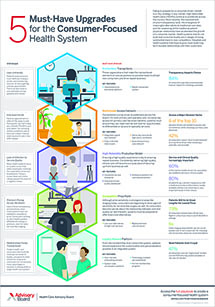It's natural in a medical emergency to call an ambulance, but as medical transport costs continue to rise, some experts say lower-cost ride-sharing services like Uber and Lyft are sometimes the better option, Austin Frakt writes for the New York Times' "The Upshot."
Our take: Uber and Lyft want to partner with you. Is that a good investment?
The exorbitant price of ambulances
When you call an ambulance, you're not only paying for the ride to the hospital, Frakt writes. You're paying for the emergency medical staff and equipment that comes with the ambulance. In some cases, those can be "lifesaving," Frakt writes. But often—about 30% of the time, according to most estimates—ambulance services are used inappropriately.
According to Frakt, research has shown "that a person's insurance coverage tends not to affect a decision about calling an ambulance in a real emergency." He continued, "But for minor injuries, people are more likely to call an ambulance if they have coverage than if they do not, even if they don't really require that level of care."
And the problem may be growing. Frakt cites research from Georgia State University and the University of Colorado Denver that found that 18 months after insurance coverage was expanded through the Affordable Care Act (ACA), ambulance dispatches for minor injuries had increased by 150%.
The cost of that inappropriate use "adds up," Frakt writes, citing data that show the United States in 2011 spent about $14 billion on ambulance services, with Medicare paying $5.3 billion.
Another downside, Frakt writes, is that unnecessary ambulance use "diverts attention and resources from true emergencies." This can increase ambulance response times: One study found the ACA's coverage expansion correlated with a 19% slowdown in ambulance response times.
Could Uber and Lyft help?
Faced with the high cost of ambulance services, increasingly patients are turning to a new-school alternative: ride-sharing services such as Uber and Lyft.
While Uber and Lyft aren't able to speed through red lights like ambulances can, and don't provide medical care en route, they nonetheless "broaden transportation options for patients and could disrupt the ambulance market," Frakt writes.
The companies, he writes, can help transport patients in non-emergency situations at lower prices than current options. Further, they empower patients to choose their own provider. Ambulances generally take patients to the closest hospital, Frakt writes, but an Uber or Lyft could take a patient to a doctor's office or their preferred hospital.
While patients have long taken Uber and Lyft to the hospital of their own accord, Uber and Lyft are now taking steps to deliberately enter the medical transportation field. Uber Health and Lyft Concierge allow providers to order rides for their patients, and both services are already being used by a large number of providers.
Broadening Uber and Lyft's use for non-emergency medical transport could also help reduce overall ambulance use, Frakt writes, citing one study that found Uber's entry into a city reduced ambulance use by 7%.
While Frakt cautions that there certainly are cases when an ambulance is warranted, taking a moment to determine if a ride-sharing service is appropriate "could save people thousands of dollars and help reduce waste in a system rife with it."
As Anupam Jena, a physician and researcher at Harvard Medical School, said, "Don't reflexively call an ambulance. Ambulances are for emergencies. If you're not having one, it's reasonable to consider another form of transportation" (Frakt, "The Upshot," New York Times, 10/1).
What your patients expect from their care—from millennials to the silent generation
Millennials, Gen X, Baby Boomers, the Silent Generation—what exactly do each of these groups want from their health care?
We surveyed thousands of consumers across the United States to find out. Download this infographic to learn how to tailor your messages and target your investments to each generation.
Don't miss out on the latest Advisory Board insights
Create your free account to access 1 resource, including the latest research and webinars.
Want access without creating an account?
You have 1 free members-only resource remaining this month.
1 free members-only resources remaining
1 free members-only resources remaining
You've reached your limit of free insights
Become a member to access all of Advisory Board's resources, events, and experts
Never miss out on the latest innovative health care content tailored to you.
Benefits include:
You've reached your limit of free insights
Become a member to access all of Advisory Board's resources, events, and experts
Never miss out on the latest innovative health care content tailored to you.
Benefits include:
This content is available through your Curated Research partnership with Advisory Board. Click on ‘view this resource’ to read the full piece
Email ask@advisory.com to learn more
Click on ‘Become a Member’ to learn about the benefits of a Full-Access partnership with Advisory Board
Never miss out on the latest innovative health care content tailored to you.



